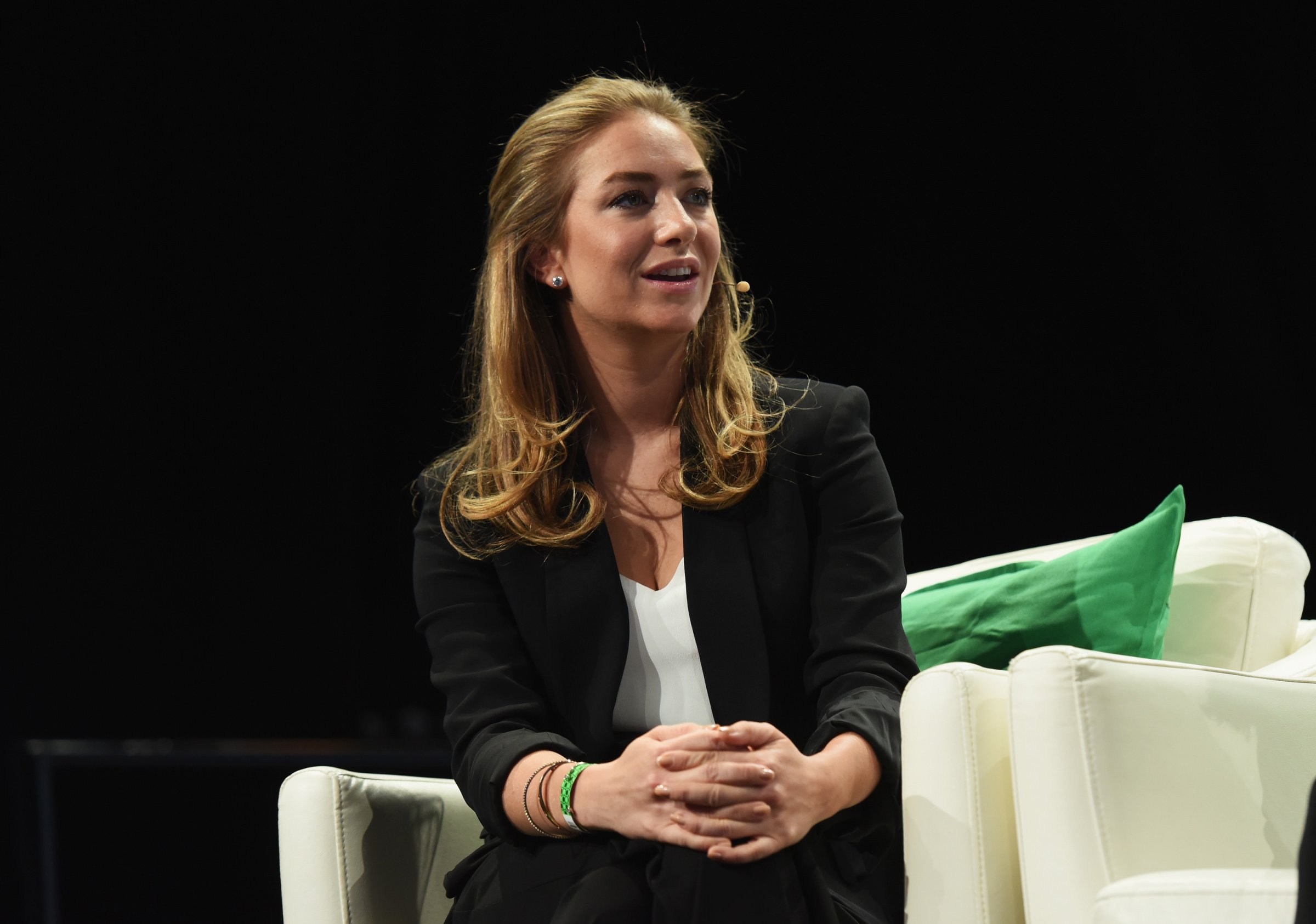
You can swipe for dates. You can swipe for friends. Now Bumble wants to let you swipe for jobs.
The new feature announced Thursday, called BumbleBIZZ, uses the location-based swipe mechanism that’s become ubiquitous to dating apps and applies it to professional networking, allowing users to swipe for contacts the way they would swipe for potential hookups. Bumble’s bet is that the local and instantaneous nature of BumbleBIZZ could make it a more casual alternative to platforms like LinkedIn, which is tuned for prospecting rather than live conversation. The idea is that if you want to expand your network, Bumble is a way to find professional contacts right here, right now.
“What is that one connection that changed the course of your career? That’s the connection we want to provide to people every day,” says Whitney Wolfe, founder and CEO of two-year old Bumble. BumbleBIZZ is scheduled to be available in early fall for mobile phones.
BumbleBIZZ is the latest step toward transforming Bumble from a dating app into a broader social-networking platform. After launching in late 2014 as so-called “feminist Tinder” because women must message men first, the Austin-based startup rolled out BumbleBFF earlier this year, which allows users to swipe to make new friends. The company also recently partnered with streaming music service Spotify, allowing users to judge friends or dates based on their music tastes. Bumble has almost 7 million registered users, or people who actually have created profiles. And although the company has yet to monetize, a source close to the company estimates it’s valued at up to $500 million.
Wolfe sees Bumble as in the vanguard of “social discovery,” a term for the next generation of social networking more focused on helping users find new friends than keeping in touch with old ones. “Facebook is the best place to keep in touch and connect with people you already know,” Wolfe says. “We want to be that for the people you don’t yet know.”
Unlike LinkedIn, which is increasingly used for long-term network growth and headhunting, BumbleBIZZ is intended to facilitate quick discovery in the business sphere. LinkedIn is being acquired by Microsoft in a deal valued at $26.2 billion as first-generation social sites mature. On the new feature, Bumble users can fill out a new profile, tailored to highlight their hobbies or professional accomplishments, so they’re not showing potential business contacts the same beach pics they might flaunt to a potential date. Otherwise, the mechanism is the same: users swipe left or right depending on the profiles they see, and like on the dating app, women have to make the first move.
Wolfe knows that the women-first feature is likely to be controversial, especially in a business context. But she says the decision to maintain the feature on BumbleBIZZ is about making it easier for women to network, especially with men. “I think a lot of women to this day struggle with feeling respected and feeling like an equal when it comes to business connection,” she says. “They feel that sometimes when they’re approaching something in a purely platonic or business connection, they feel like the conversation goes in a different direction.” Wolfe knows a thing or two about that: she famously left Tinder, where she was listed as a co-founder, after settling a sexual harassment lawsuit against the company and ex-boyfriend Justin Mateen.
The other distinguishing feature of BumbleBIZZ is the immediacy. Unlike LinkedIn, where invitations can languish for weeks like spam mail, BumbleBIZZ could offer a way to meet a potential business contact during a conference, weekend trip, or even a long layover. “It drives immediate behavior, and I think immediate behavior is a really powerful thing,” Wolfe says. “It’s the closest we can get to real life.”
Wolfe says that as a CEO, she can envision using BumbleBIZZ for everything from hiring to getting help for a local event. And that immediate connection is important, she argues, because sometimes when you’re looking for help with a project, you don’t have time to wait around for people to check their LinkedIn messages. Wolfe says she came up with the idea after she used Bumble to make connections with senior executives at Facebook and Snapchat. (Wolfe, who is newly engaged, uses her app to connect with new friends and business contacts, since she’s already in a relationship.)
Some users might not want to mix fun and business on the same app. Just look at all the people who have gotten fired for posting the wrong thing on Facebook. But Wolfe believes integration is the next step for business networking, and that users will quickly get used to it. “The same way people were somewhat perplexed by on-demand hyper local dating apps in 2012, I think we’ll be met by the same perplexity right now with this,” she says. “But I think soon it’s going to be normalized, and I think this is the direction that social discovery is moving. Hyper-locality is where everything is going right now.”
Besides, Wolfe says, Bumble intends to help users forge meaningful connections in all areas of their life; work is just the logical next step. “The romantic component, the friendship component, and the business component: those are three broad relationship components in one’s life,” she says. “We want this to be less about your resume and more about who you are.”
More Must-Reads from TIME
- Donald Trump Is TIME's 2024 Person of the Year
- Why We Chose Trump as Person of the Year
- Is Intermittent Fasting Good or Bad for You?
- The 100 Must-Read Books of 2024
- The 20 Best Christmas TV Episodes
- Column: If Optimism Feels Ridiculous Now, Try Hope
- The Future of Climate Action Is Trade Policy
- Merle Bombardieri Is Helping People Make the Baby Decision
Write to Charlotte Alter at charlotte.alter@time.com